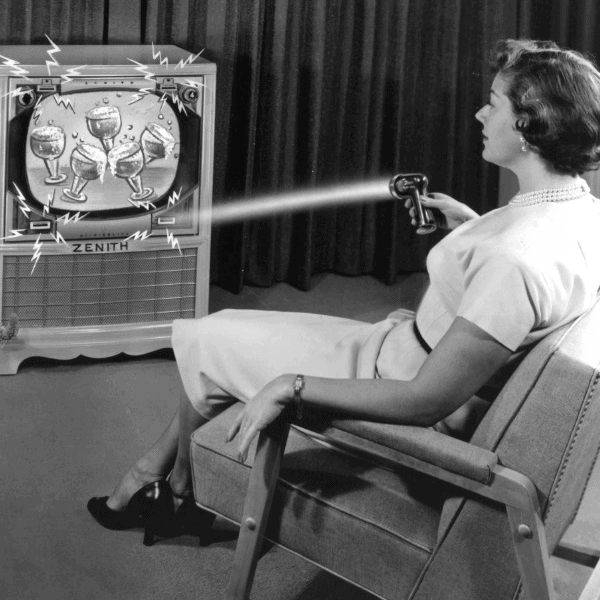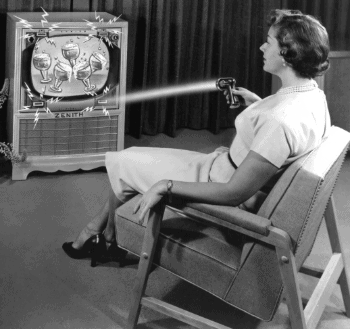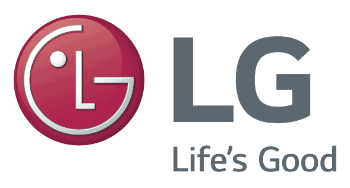Heritage
Beginning with the advent of radio, the legendary Zenith name has been synonymous with quality and innovation for generations of American consumers. Pioneers in electronics technology for 95 years, Zenith inventors have made countless industry-leading developments, including the first wireless TV remote controls, the first portable and push-button radios, the first stereo audio systems for FM radio and television, and the first terrestrial broadcast system for HDTV using digital technology.
Today’s Zenith, a wholly owned subsidiary of global innovator LG Electronics, is a leading U.S. technology and licensing company. Capitalizing on the powerful combination of LG’s technical, marketing and financial resources, and Zenith’s renowned brand name and digital HDTV expertise, Zenith merged with LG in 1999. Today, the Zenith R&D Lab, based in Lincolnshire, Ill., is the headquarters for LG’s U.S. research subsidiary for consumer electronics, hospitality and health care innovations, as well as broadcasting standards and technologies.
















The Early Years
Zenith got its start in 1918 when two wireless-radio enthusiasts, Karl Hassel and Ralph H.G. Mathews, set up a “factory” on a kitchen table in Chicago and began making radio equipment for other amateurs. By the early 1920s, the infant radio industry began to grow as did the business, called Chicago Radio Laboratory, which sold radios under the name “Z-Nith.” (This was the origin of the Zenith Trademark, derived from the call letters of the founders’ amateur radio station, 9ZN.) Led by entrepreneur and explorer Commander Eugene F. McDonald, Jr., Zenith Radio Corporation was incorporated in 1923.
The young company’s early accomplishments included the world’s first portable radio (1924), the first home radio receivers to operate on household current (1926), and the first automatic push-button radio tuning (1927). Zenith’s famous slogan, “The Quality Goes In Before The Name Goes On,” was first used in 1927.
Founded on radio engineering, Zenith soon became a leader in other consumer electronics developments, such as the first all-electronic TV station (1939), the first FM radio station in the Midwest (1940) and the world’s first subscription TV system known as “PhoneVision” (1947). Zenith pioneered AM and FM radio broadcasting—including the invention of the stereo FM radio broadcast system, authorized by the Federal Communications Commission (FCC) in 1961 and still in use worldwide—and played a key role in developing broadcast standards for black-and-white and color television.
Reflecting Zenith’s impact on the worldwide consumer electronics industry, Zenith and its parent company have more individuals inducted into the Consumer Electronics Hall of Fame than any other company.
Zenith Milestones : Legacy of Innovation and Leadership
1918 – Chicago Radio Laboratory formed
1923 – Zenith Radio Corporation founded
1924 – First portable radio
1925 – First AC-powered radios
1927 – First push-button radios
1939 – First all-electric television station
1947 – First subscription television system – PhoneVision
1950 – First wired TV remote control – Lazy Bones
1954 – First 21-inch rectangular color picture tube
1955 – First wireless TV remote control – Flash-Matic
1956 – First practical wireless TV remote control – Space Command
1961 – FCC adopts Zenith FM stereo radio standard
1969 – First black matrix color picture tube – Chromacolor
1976 – First extended field lens (EFL) electron gun
1984 – FCC adopts Zenith/dbx MTS stereo TV sound standard
1986 – Zenith receives Emmy award for MTS development
1987 – First flat-screen high-resolution color picture tube
1988 – First practical, partially digital simulcast HDTV system
1991 – First TV sets with built-in closed caption decoders
1994 – First TV sets featuring on-screen electronic program guide
1995 – First trackball-operated TV remote
1996 – FCC adopts Zenith digital TV transmission standard
1997 – Zenith receives Emmy awards for HDTV and remote control
1997 – First HDTV-capable projection monitor – PRO900X
1998 – First “talking” VCR – SpeakEZ
1999 – Zenith becomes LG Electronics subsidiary
2000 – First 60-inch HDTV plasma display demonstrated
2001 – Zenith receives Emmy award for flat-screen CRT technology
2002 – First affordable integrated HDTVs
2004 – Zenith invents Pro:Idiom digital rights management system
2007 – Zenith converter boxes certified by Commerce Department
2009 – Zenith-developed mobile DTV standard adopted by ATSC
2011 – Zenith, LG and PBS develop mobile emergency alert system
2013 – M-EAS adopted as part of U.S. broadcast standard
Television Pioneer
 Early television developments included some of the first prototype television receivers in the 1930s and experimental TV broadcasts, which began in 1939 and, at the request of the FCC, continued during World War II.
Early television developments included some of the first prototype television receivers in the 1930s and experimental TV broadcasts, which began in 1939 and, at the request of the FCC, continued during World War II.
In 1948, Zenith introduced its first line of black-and-white TV sets. Among the many pioneering Zenith developments in the early days of television were the industry’s first 21-inch, three-electron-gun rectangular color picture tube (1954), the first wireless TV remote control, “Flash-Matic” (1955) and then “Space Command,” the first ultrasonic remote control, which revolutionized TV tuning worldwide for the next quarter century (1956).
Zenith introduced its first color TV sets for consumers in 1961 and quickly established itself as a leading brand. The 1969 introduction of the revolutionary “Chromacolor” black-matrix (negative guardband) picture tube doubled the image brightness of color television and established a new standard of performance for the entire industry. The “EFL” (extended field length) electron gun (1976) and “System 3” modular TV chassis (1978) contributed to Zenith’s continued strength in color television during the 1970s.
From “Zenith Radio” to “Zenith Electronics”
Mounting competitive pressures in its core consumer electronics business led Zenith to use its broad engineering and marketing expertise to diversify, as the company entered the original equipment manufacturer (OEM) components and cable television products businesses in the late 1970s.
In 1979, Zenith acquired the Heath Company, the world’s largest manufacturer of build-it-yourself electronic kit products for hobbyists. Capitalizing on Heath’s early entry into personal computers, Zenith formed Zenith Data Systems in 1980. Zenith’s management built the computer business into a billion-plus-dollar operation by the late 1980s and sold the business in 1989.
By the mid-1980s, Zenith Cable Products (later known as Zenith Network Systems) was a leading supplier of set-top boxes to the cable industry and a pioneer in cable modem technologies. The 1990s saw this business evolve into a supplier of digital set-top boxes for wired and wireless networks. Zenith sold the Network Systems division in 2000.
The company marketed its last radio in 1982 (among other things, the end of the line for the famous Zenith “Trans-Oceanic” multi-band radio). Even as the company changed its name from “Zenith Radio Corporation” to “Zenith Electronics Corporation” in 1984, Zenith remained committed to audio engineering related to television. Zenith engineers co-developed the multichannel television sound (MTS) transmission system adopted by the industry for stereo TV broadcasts (1984), and received an Emmy (1986) for pioneering work on development of MTS stereo TV.
A major Zenith advance of the 1980s was the patented “flat tension mask” technology for high-resolution color video displays with perfectly flat screens, glare-free viewing and superior performance, which earned the company a technical Emmy in 2001. Other noteworthy Zenith television innovations include TV receivers with “Sound by Bose” (1986) and “Dolby Surround Sound” (1988), as well as the first TVs with built-in closed caption decoders (1991), the first TVs with built-in on screen electronic program guide (1994), and the first TVs with a track-ball operated remote control (1995).
Digital High-Definition Television
Beginning in 1988, Zenith has been a leader in HDTV technologies. As one of HDTV’s earliest proponents, Zenith developed a number of key digital technologies. Zenith was the first to propose a partially digital signal, pioneered the use of the so-called “taboo” broadcast channels for the transition to HDTV and was the first to use computer-friendly progressive scanning.
Zenith developed the VSB (vestigial side band) digital transmission system, which was adopted in December 1996 by the FCC as the centerpiece of the ATSC (Advanced Television Systems Committee) digital television broadcast standard. In 1997, Zenith and other members of the Digital HDTV Grand Alliance earned a technical Emmy for pioneering developments behind the ATSC standard.
Zenith’s first HDTV products, digital HDTV receiver/decoders, were introduced in 1998, followed by integrated Digital HDTV sets in 1999 and HD-compatible monitors in 2000. Zenith introduced the world’s first 60-inch HDTV plasma display panel in 2001, and more affordable direct-view integrated HDTVs in 2002. Zenith digital-to-analog converter boxes supported the U.S. transition to all-digital broadcasting in 2008-09.
Powerful Alliance with LG
 Although Zenith’s experience in digital HDTV technology had prepared it for leadership in the digital age, the company needed a global partner with complementary skills to help it compete more effectively. In November 1995, LG Electronics Inc., a world leader in consumer electronics, acquired a majority interest in Zenith.
Although Zenith’s experience in digital HDTV technology had prepared it for leadership in the digital age, the company needed a global partner with complementary skills to help it compete more effectively. In November 1995, LG Electronics Inc., a world leader in consumer electronics, acquired a majority interest in Zenith.
Zenith launched a major brand revitalization program in 1997, updating its famous lightning bolt logo and creating a new marketing campaign designed to introduce the company and its products to a new generation of consumers. In 1998, Zenith was recognized by Fortune Magazine as the top consumer electronics brand in customer satisfaction.
In 1999, Zenith completed a broad financial and operational restructuring plan designed to return the company to financial health and leverage its brand, distribution and technology strengths. In November 1999, Zenith became a wholly owned subsidiary of LG. The new century marked a new beginning for Zenith, building on its technology strengths and those of its parent company.
Throughout the first decade of the New Millennium, the Zenith R&D Lab in Lincolnshire, Ill., in cooperation with the LG Convergence Lab in Seoul, helped drive the U.S. digital TV transition. More than 5 million Zenith-brand digital-to-analog converter boxes were purchased by U.S. consumers as the nation transitioned to all-digital broadcasting by 2009.
During that same period, Zenith and LG engineers also developed new digital television technologies, including the core innovations behind the broadcasting standard for mobile digital TV, adopted by the ATSC in 2009.
New Innovations Drive Future Technology
 Zenith also played a major role in the development of the new standard adopted in 2013 for the Mobile Emergency Alert System, which harnesses the power of mobile TV to deliver rich media emergency alerts to mobile devices. M-EAS is the foundation for next-generation Advanced Warning and Response Network technology, expected to be a core element of the ATSC 3.0 broadcast standard.
Zenith also played a major role in the development of the new standard adopted in 2013 for the Mobile Emergency Alert System, which harnesses the power of mobile TV to deliver rich media emergency alerts to mobile devices. M-EAS is the foundation for next-generation Advanced Warning and Response Network technology, expected to be a core element of the ATSC 3.0 broadcast standard.
Zenith launched Pro:Idiom, a digital rights management technology for the hospitality market, to enable the widespread availability of high-value HDTV content in hotel rooms across the nation.
Building on nearly a century of innovation, quality and industry leadership – and the strong support of its parent company – Zenith is committed to leadership in the digital television technologies of tomorrow.
